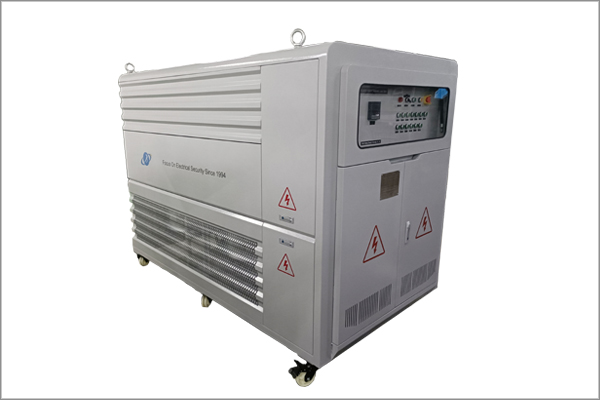Requirements and Implementation Guidelines for Marine Generator Load Testing
Time:2024-07-22
1. Introduction
Marine generators, as the core equipment of a ship's power system, play a vital role in ensuring safe navigation, smooth operation of equipment, and the well-being of crew members. Regular load testing of these generators is crucial to maintain their performance under various operating conditions. This article aims to outline the basic requirements, test contents, methods, and precautions for marine generator load testing, providing a reference for ship managers and testing technicians.
2. Basic Requirements for Marine Generator Load Testing
Safety: Load testing must strictly adhere to ship safety regulations to ensure no harm to personnel, equipment, or the ship itself. Adequate safety preparations should be made before the test, including but not limited to checking insulation status, confirming proper grounding, and setting up safety warning signs.
Accuracy: Testing instruments must be calibrated to ensure the accuracy and reliability of measurement data. The test process must be executed strictly according to the test plan to avoid human errors.
Comprehensiveness: The load test should cover all key performance indicators of the generator, including but not limited to output voltage, current, power factor, frequency stability, temperature rise, and overload capability.
Scheduling: Load testing should be scheduled according to the ship's maintenance plan to avoid disrupting normal operations.
3. Test Contents and Methods
No-Load Test:
Start the generator without a load and observe and record whether the output voltage, frequency, and other parameters are stable within the specified range.
Check the smooth operation of the generator, listening for abnormal sounds or vibrations.
Partial Load Test:
Gradually increase the load to various levels, testing and recording the voltage, current, power factor, and other parameters at each load point.
Monitor the temperature rise of the generator to ensure it does not exceed the allowable limit.
Full-Load Test:
Load the generator to its rated capacity and operate it continuously for a period (typically several hours) to comprehensively assess its performance under full load conditions.
Monitor and record all generator parameters, paying particular attention to temperature rise and vibration.
Overload Test (Optional, based on actual needs):
Briefly subject the generator to a load exceeding its rated capacity, under safe conditions, to assess its overload capability and the reliability of protective devices.
Note that overload testing requires careful execution and prior formulation of detailed safety measures and emergency plans.
4. Precautions
Environmental Factors: Consider the influence of external factors such as ambient temperature, humidity, and ventilation conditions on the test results.
Recording and Analysis: Record test data in detail and analyze the results after the test to assess whether the generator's performance meets requirements.
Maintenance: After the test, perform necessary maintenance on the generator based on the test results, such as replacing worn-out components and cleaning dust accumulation.
Emergency Plan: Develop an emergency plan before the test to respond to potential contingencies, ensuring the safety and controllability of the testing process.
5. Conclusion
Marine generator load testing is a critical means of ensuring the stable operation of ship power systems. By scientific planning and strict adherence to testing requirements, potential issues with the generator can be identified and resolved in a timely manner, enhancing the safety and reliability of the ship. Therefore, ship managers and testing technicians should attach great importance to marine generator load testing, ensuring the accuracy and validity of test results.
News Recommendation
-
 2024-09-11
2024-09-11TRIUMPH LOAD EXHIBITING AT Enlit Europe 2024 -BOOTH 7.H08
-
 2023-04-21
2023-04-21TRIUMPH LOAD EXHIBITING AT DATA CENTER WORLD GERMANY 2023-BOOTH F909
-
 2023-04-06
2023-04-06TRIUMPH LOAD EXHIBITING AT ELECTRIC POWER TECH KOREA 2023 – Booth G109
-
 2022-05-05
2022-05-05What is the role of ac load bank for power supply?
-
 2022-05-05
2022-05-05What is the role of the load bank?


